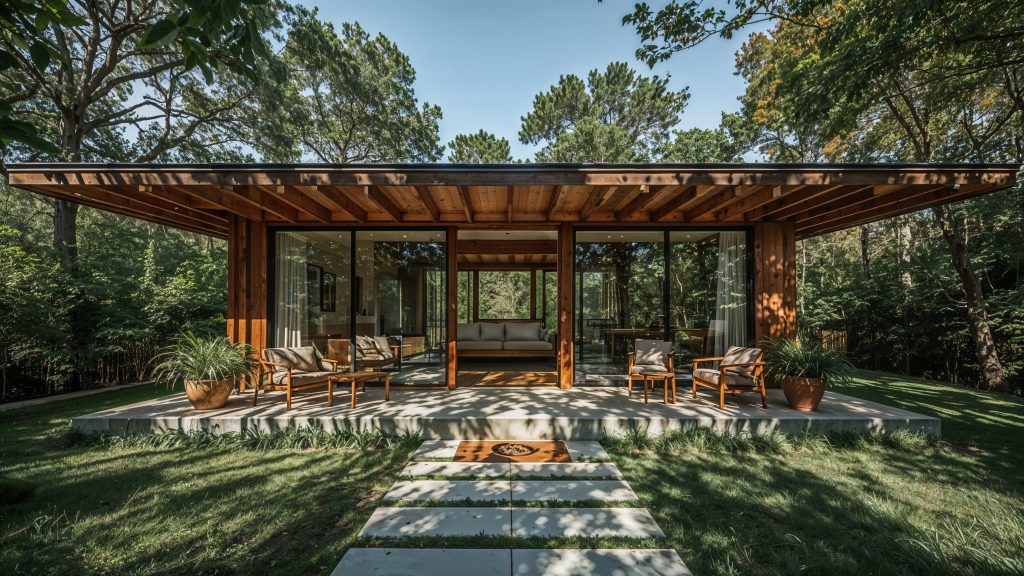2025 Short-Term Rental Market Trends: Where Growth, Guest Demands, and Competitive Strategy Align

2025 Short-Term Rental Market Trends: Where Growth, Guest Demands, and Competitive Strategy Align
The short-term rental (STR) market in 2025 stands at an inflection point—more mature, competitive, and brimming with opportunity than ever before. For investors, the days of easy wins are fading as new dynamics shape the landscape. A recent survey found that 76% of hosts cite increased competition, and nearly a quarter have exited the market in the past year. Yet, with robust demand and emerging guest preferences, strategic investors are thriving. Let’s explore the essential trends and actionable strategies that define the STR market for 2025.
Supply and Demand—Market Balance in 2025
After years of rapid expansion, the pace of STR supply growth has slowed to 4.7% for 2025—significantly down from prior years. High interest rates and persistent inflation are limiting new housing transactions, making new inventory scarcer and heightening the value of existing properties. Despite these constraints, demand continues to surge—up 7% year-over-year—driving occupancy rates back to historical norms and supporting a projected 2.9% increase in revenue per available rental (RevPAR).
While North America’s supply growth has plateaued, global opportunities beckon: Asia and Africa are experiencing rapid increases in STR listings, outpacing Western markets. For investors seeking outsized returns, exploring these emerging regions—or underserved secondary and tertiary U.S. markets—can be a winning move.
Intensifying Competition and Performance Gaps
Market saturation is a top concern for over half of STR operators, and competition is fierce. One in four hosts has left the market, often due to underperformance or operational strain. Yet, this environment creates a clear performance gap—those who embrace advanced technology, dynamic pricing, and strategic property management pull ahead of the pack.
- Dynamic, tech-enabled pricing ensures properties remain competitive and profitable, especially as booking behaviors change rapidly.
- Lean, optimized operations—from streamlined cleaning to automated guest communications—cut costs and improve guest satisfaction.
- Professional branding and guest experience innovation help properties stand out in crowded markets.
Evolving Guest Preferences—What’s Bookable in 2025
Today’s guests are more discerning and values-driven. Properties that cater to eco-conscious, wellness-focused travelers are winning bookings. Amenities like Green Key or LEED certifications, yoga spaces, spa-inspired bathrooms, and energy-efficient systems are now must-haves for many guests.
The surge in demand for unique and experiential stays is especially pronounced. Travelers are actively seeking properties that offer immersive, authentic local experiences—think farm stays, themed getaways, or homes with curated activity guides. Personalized, connected guest services are no longer a luxury but an expectation.
Urban markets, after a period of stagnation, are rebounding as travel patterns normalize. Savvy investors are diversifying portfolios across various property types and locations to capture this renewed demand.
Shorter Booking Windows and Navigating Uncertainty
One of 2025’s defining challenges is the shift toward shorter booking lead times. Guests are increasingly booking last-minute, compressing forecasting windows and complicating revenue management. Investors must stay agile—leveraging real-time data and dynamic pricing tools to optimize occupancy and nightly rates.
On the horizon, policy changes and inflationary pressures remain risks to monitor. Keeping a pulse on local regulations and economic trends is critical for long-term stability and success.
Actionable Investor Strategies for 2025
- Reevaluate your portfolio: Consider emerging regions or revisit urban/suburban markets poised for supply growth as mortgage rates ease.
- Upgrade property amenities: Invest in eco and wellness features—EV charging, sustainable materials, air purifiers, or meditation spaces—and pursue recognized certifications to boost appeal.
- Invest in brand and technology: Develop a compelling property story, leverage digital guidebooks for guest engagement, and deploy dynamic pricing and market analysis platforms.
- Diversify your distribution: List properties across multiple booking platforms and utilize market finders to target high-potential areas.
- Use professional tools: Platforms like AirDNA, Touch Stay, Rabbu Market Finder, and Key Data provide ongoing insights and performance benchmarks. Vodyssey’s free STR market analysis toolkit is a great place to start or refine your strategy.
Case Examples and Success Stories
Differentiation Drives Results: A host in the Pacific Northwest saw occupancy jump 18% after introducing wellness features—infrared saunas, organic linens, and a digital guidebook highlighting local hiking trails. Meanwhile, a small-city host in Kenya leveraged eco-certification and immersive local partnerships to achieve 30% higher RevPAR than regional averages in 2024.
Conclusion: Adapt, Anticipate, and Accelerate Your STR Success
The 2025 STR market rewards those who anticipate guest needs, manage risk proactively, and continually adapt their offerings. By embracing shifting trends—eco-consciousness, personalized experiences, real-time data tools—and staying alert to market opportunities, investors can thrive even as competition intensifies.
Ready to level up? Explore more insights on the Vodyssey blog, or book a strategy session to access our free STR market analysis toolkit and expert guidance for your 2025 investment journey.
